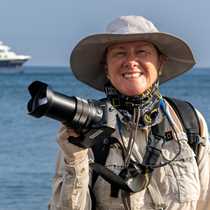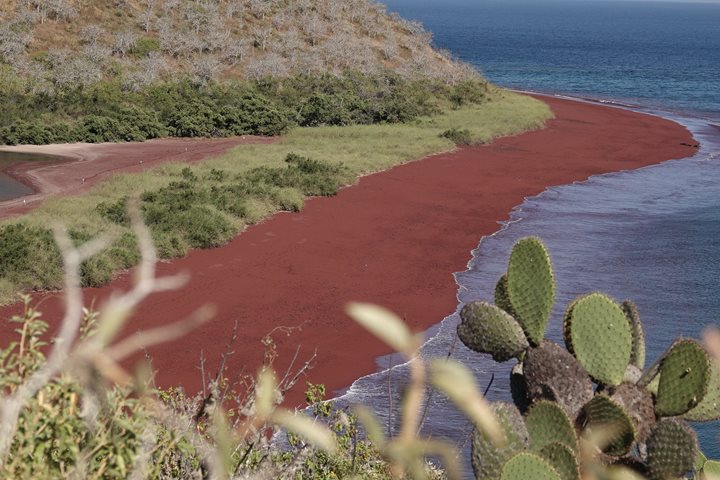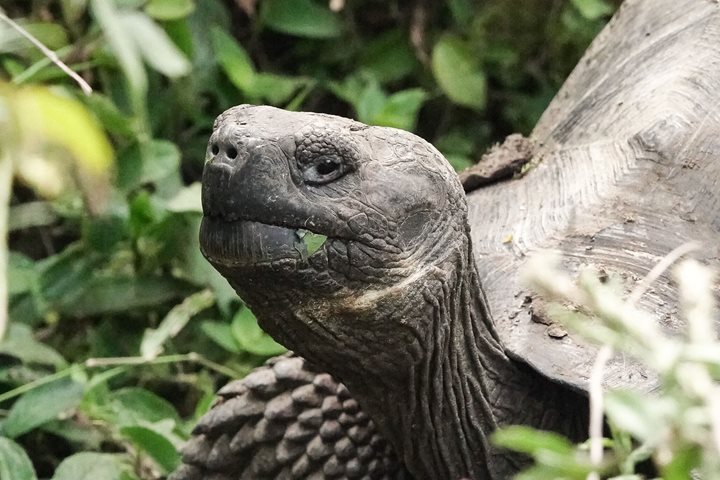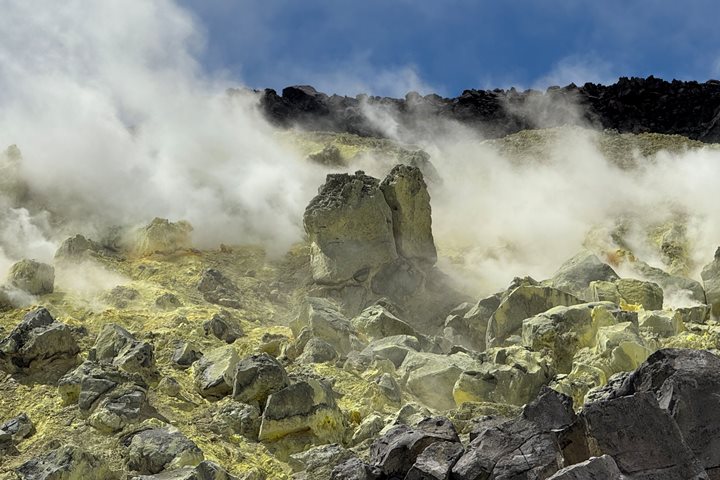A day filled with wonder and some hard work! An early morning outing gave us blacktip reef sharks, penguins, and after a short walk, some yearling marine iguanas waking up and warming up. After breakfast, we took a bus into the highlands. We climbed the flanks of a volcano, the widest of Isabela’s five volcanos. Vegetation changed from arid coastline to verdant green. It doesn’t always look like this, and the wet season has indeed been very wet, providing us with this beautiful result.
We enjoyed a long hike, with some mud yet no slips, lots of photos, and many awe-inspired exclamations at the vast caldera of Sierra Negra.







